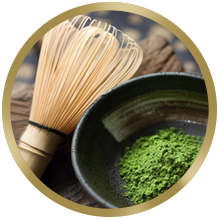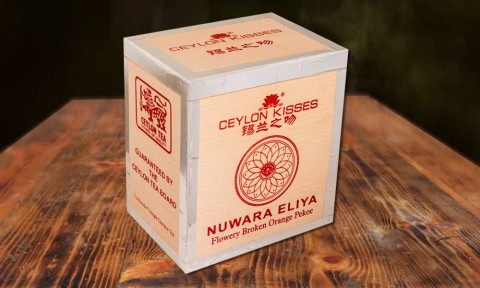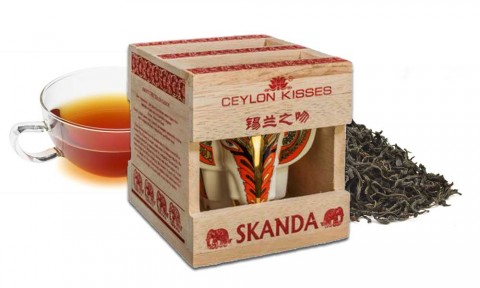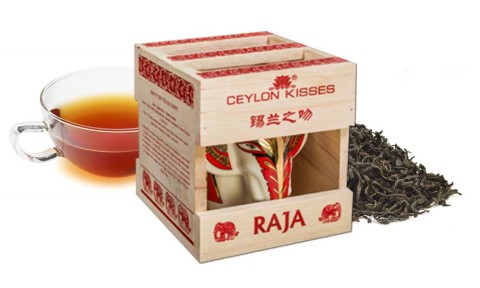
 Green tea is ubiquitous in Japan and is commonly known simply as “tea” (お茶 ocha). Tea was first grown in China, and was brought to Japan by Myoan Eisai, a Japanese Buddhist priest who also introduced the Rinzai school of Zen Buddhism. Teas from Japan may be referred to as “Japanese tea” (日本茶 nihoncha). Japanese green tea is made from the Yabukita (薮北) cultivar of the camellia sinensis plant. Unlike Chinese green teas which are pan-fired, Japanese green teas are steamed giving them a more “vegetative” or “leafy” taste. The exception is hojicha, a Japanese roasted tea. Japanese green teas are categorized by the age of the leaves: young leaves are called Sencha and the more mature, larger leaves are called bancha. Types of tea are commonly graded depending on the quality and the parts of the plant used as well as how they are processed. There are large variations in both price and quality within these broad categories, and there are many green teas that fall outside this spectrum. The best Japanese green tea is said to be from the Yame (八女 yame) region of Fukuoka Prefecture and from the Uji region of Kyoto. Uji has been producing Ujicha (Uji tea) for four hundred years, pre-dating the prefecture system. It is now a combination of the border regions of Shiga, Nara, Kyoto, and Mie prefectures. Shizuoka produces 40 percent of raw tea leaf.
Green tea is ubiquitous in Japan and is commonly known simply as “tea” (お茶 ocha). Tea was first grown in China, and was brought to Japan by Myoan Eisai, a Japanese Buddhist priest who also introduced the Rinzai school of Zen Buddhism. Teas from Japan may be referred to as “Japanese tea” (日本茶 nihoncha). Japanese green tea is made from the Yabukita (薮北) cultivar of the camellia sinensis plant. Unlike Chinese green teas which are pan-fired, Japanese green teas are steamed giving them a more “vegetative” or “leafy” taste. The exception is hojicha, a Japanese roasted tea. Japanese green teas are categorized by the age of the leaves: young leaves are called Sencha and the more mature, larger leaves are called bancha. Types of tea are commonly graded depending on the quality and the parts of the plant used as well as how they are processed. There are large variations in both price and quality within these broad categories, and there are many green teas that fall outside this spectrum. The best Japanese green tea is said to be from the Yame (八女 yame) region of Fukuoka Prefecture and from the Uji region of Kyoto. Uji has been producing Ujicha (Uji tea) for four hundred years, pre-dating the prefecture system. It is now a combination of the border regions of Shiga, Nara, Kyoto, and Mie prefectures. Shizuoka produces 40 percent of raw tea leaf.
CK Wooden Chest UWA
Uva is Sri Lanka’s most remote province. Though not far from Kandy or Nuwara Eliya as the crow flies; access to its provincial capital, Badulla, is only possible over steep, winding mountain roads.
CK Wooden Chest NUWARA ELIYA
Probably the best-known of Sri Lanka’s tea-growing districts, Nuwara Eliya is also the most rugged and mountainous, with the highest average elevation.
CK Wooden Chest DIMBULA
Dimbula is perhaps the most famous name associated with Ceylon Tea. Southwards from Kandy, the central mountains rise in elevation until the plateau of Nuwara Eliya is reached.
CK Ceramic Elephant with SKANDA
The young elephant Skanda had been purchased along with Maligawa Raja by Tikiribanda Mampitiya Disawe of Giragama Mansion in Kandy for LKR3300, considered a fortune at that time.
CK Ceramic Elephant with KANDULA
Kandula is a famous war elephant mentioned in the Sinhala chronicle Mahavamsa. According to the chronicle, when King Dutugemunu of Sri Lanka (101–77 BC) was born, many items of value were said to have appeared spontaneously, which were found and brought in by various people as gifts to the newborn.
CK Ceramic Elephant with RAJA
The Pinnawala elephant herd is known to be the largest permanent concentration of captive Asian elephants in the world. This blind tusker was a significant attraction to the visitors at the orphanage.






